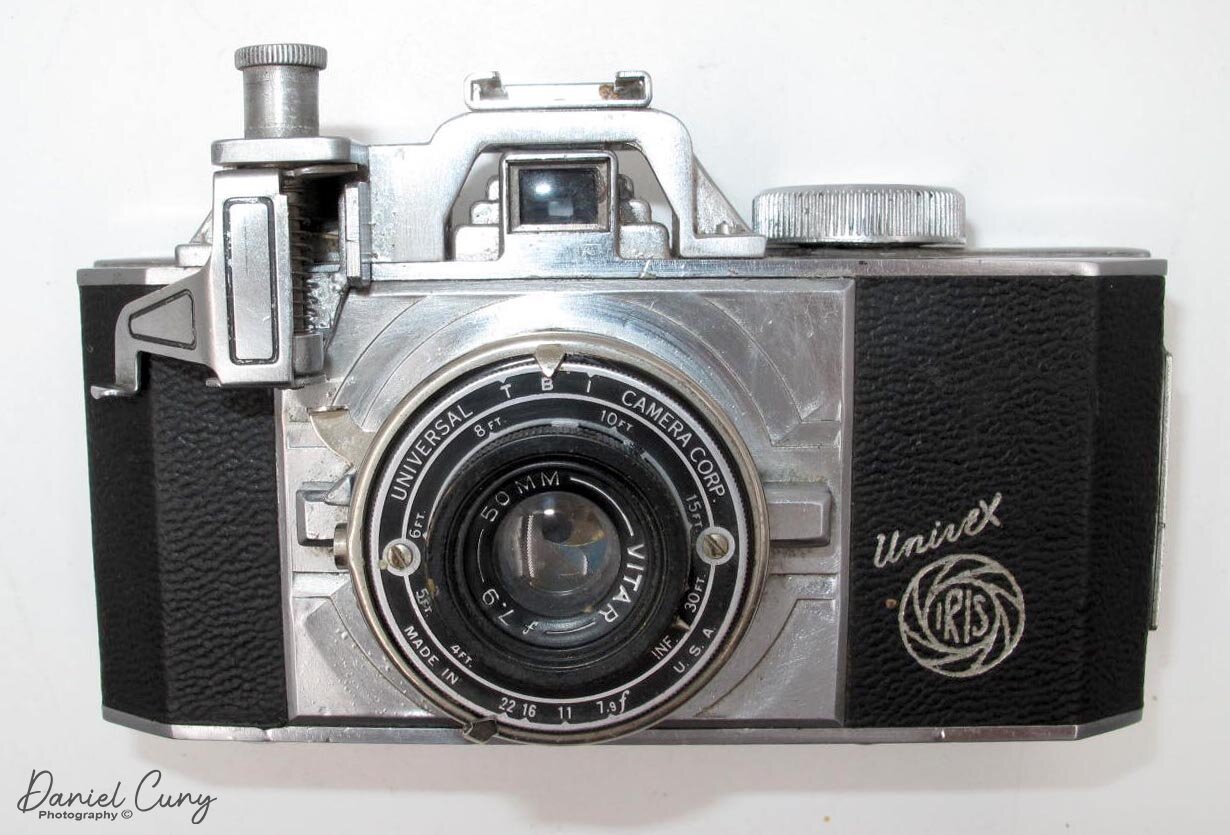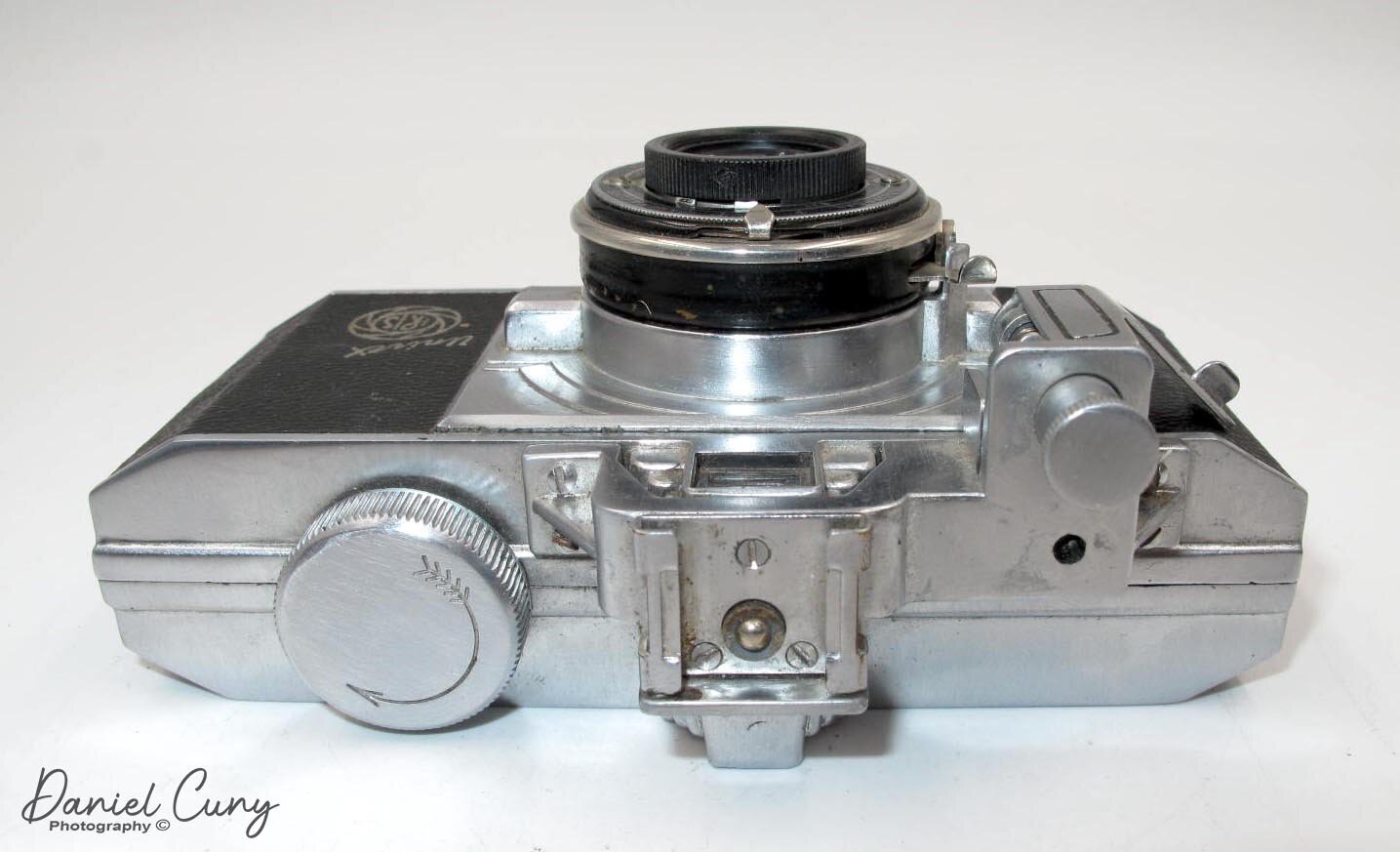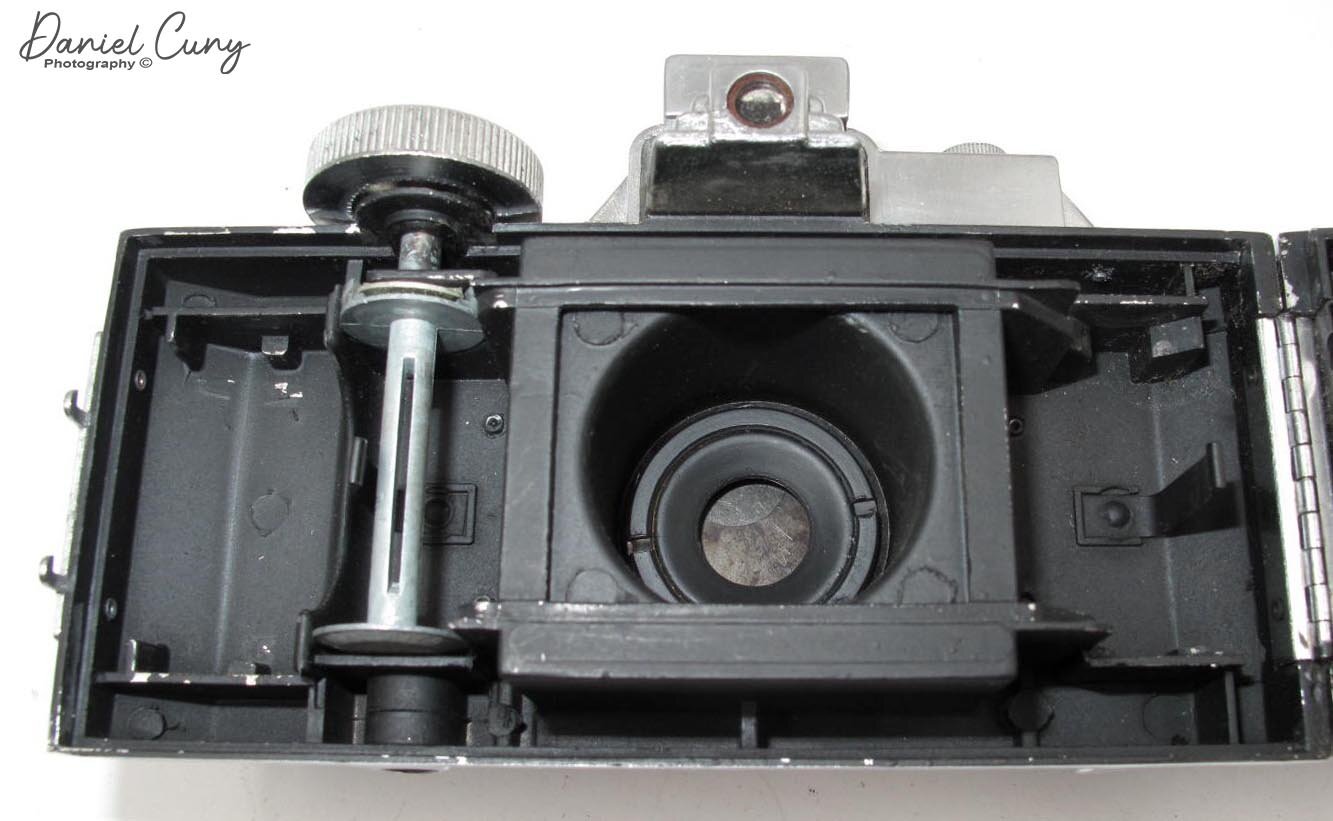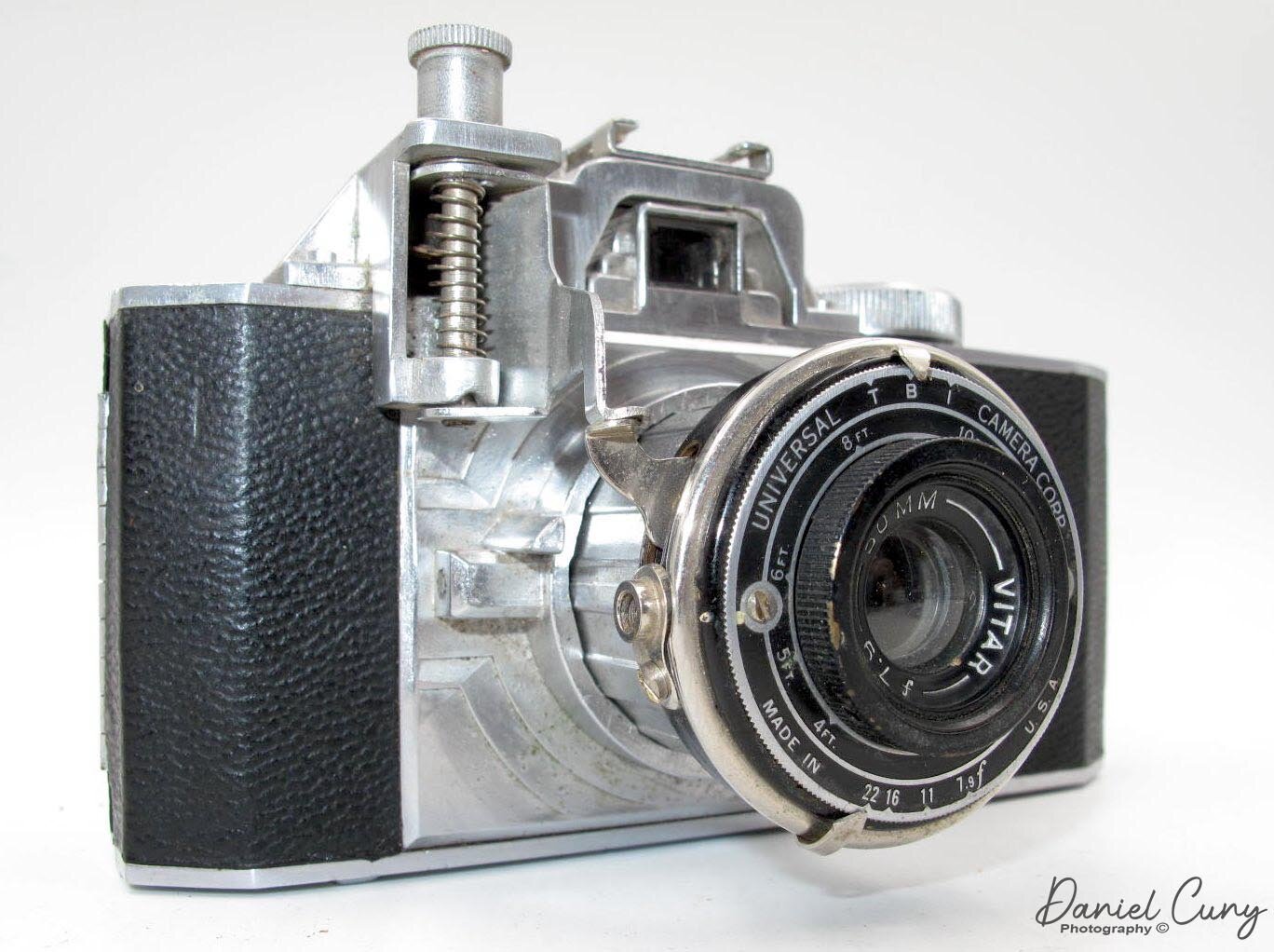Univex Iris Deluxe Flash Candid Camera w/lens extended & shutter release in position.
Camera name
I've always had a fondness for The Universal Camera Corporation of New York, NY. for a few different reasons. First, it was the company that made the first real camera given to me by my uncle when I was 11 years old, the Uniflex II. I'm also a fan of many of their different cameras, like the multi-colored versions of the Univex AF, the Univex Twinflex, and the Mercury cameras. All these cameras have a real uniqueness to them.
The Universal Camera Corporation started in 1932 at 521 Fifth Ave. They moved the following year to 32-46 West 23rd St. New York, NY. It stayed in that location until it ran out of the office and manufacturing space in 1938. Starting in the depression era, they made reasonably inexpensive cameras that were well made that also used their film, the successful Universal six exposure #OO film for their cameras. Until 1938, The Universal Camera Corp. was making primarily smaller cameras like the Original Univex Model A camera, which sold for $0.39 and was wildly successful. In 1938, to revise the sales of #00 film, Universal Camera Corp came out with a line of Candid Cameras, which became increasingly popular during this time.
The Universal Camera Corp is very well known for making minor adjustments and refinements to the initial design and selling these upgrades and approvements at an additional cost. The original Iris Standard Candid Camera sold for the whopping price of $5.95 and the case for an additional $2.00, but given that this was the depression, I'm sure it was quite a bit too many. One of the significant improvements Universal Camera made was the concept of internal photoflash synchronicity without external wiring and incorporating a hot shoe in cameras, which is the main addition to the camera. They added a hot shoe to the top of the camera and a swing-out shutter release, which can be triggered from the top of the camera as opposed to the lens. Also, there is a stop built into the camera body. When the lens is retracted, the shutter cannot be released, thus preventing wasting film and expensive flashbulbs by accidentally tripping the shutter. When the lens is retracted, you can swing the shutter release back to make the camera more compact. This addition to the camera came at a cost as this version of the camera was introduced in mid-1939. One last exciting feature on this camera is a holding compartment in the back of the camera to hold a spare roll of film.
The camera is relatively weighty for such a beautiful camera, weighing in at 1 lb. 5 oz. and measures 5" wide by 3" tall by 3" deep with the lens pulled out for exposures. The camera has a 50mm f7.9 Vitar lens with aperture setting from f7.9-22. On my camera, the lens can focus from 4 feet to infinity with a pin showing the focus distance around the lens. The shutter has three settings, "T," so you'll press the shutter release to open, and press again to close, "B," the shutter opens for the time you have the shutter release depressed, and "I" which is my guess 1/50 shutter speed. The shutter release is approximately 10 o'clock, with the ability to use a cable release directly below the shutter release button. The rear door is hinged and not removable, and there is a tripod socket on the bottom of the camera.
Much of the company information regarding this camera comes from the excellently written and only book that I'm aware of on The Universal Camera Corp, The Univex Story—written by Cynthia. Repinski. If you're interested, you can get a personally autographed version of the book here.
Please feel free to send me an email if you have questions or concerns regarding this or other items on my website. Thank you for taking the time to look through the post. Until next week, be safe.








